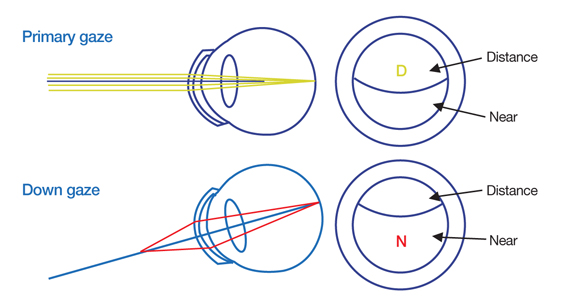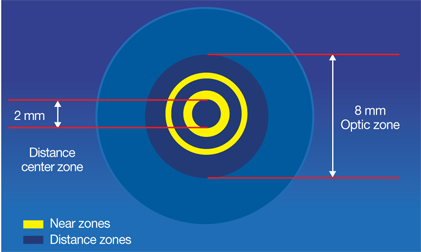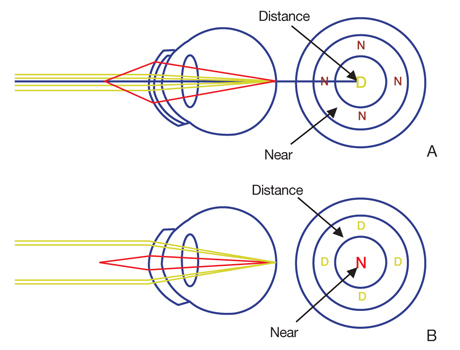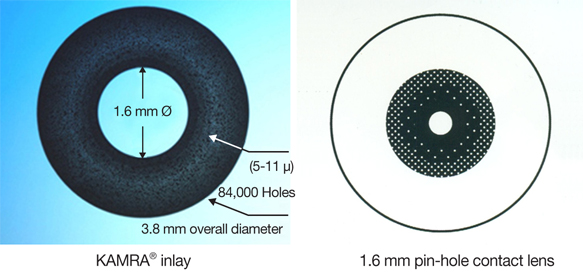J Korean Med Assoc.
2013 Apr;56(4):303-309. 10.5124/jkma.2013.56.4.303.
Presbyopia and contact lenses
- Affiliations
-
- 1Department of Ophthalmology, University of Inje College of Medicine, Seoul, Korea. lasiklove@hanmail.net
- KMID: 2192932
- DOI: http://doi.org/10.5124/jkma.2013.56.4.303
Abstract
- Presbyopia as a result of a gradual decrement in visual function at near is one of most prevalent conditions causing patient concern and complaints in the 40 years and older age group. Many presbyopic patients believe the loss of accommodation represents a considerable decrease in their quality of life. Optical solutions to improve near vision in presbyopic patients can be classified as non-surgical or surgical. Among the non-surgical methods, several contact lens options for the presbyope include 1) single vision contact lens wear and reading glasses, 2) monovision in which one eye is optimally corrected for distance and the other eye is optimally corrected for near vision, and 3) bifocal/multifocal contact lenses. Most presbyopic patients who use computers should be considered for multifocal lenses because of their need for intermediate vision. Without severe dry eye and over 0.75 diopters astigmatism, most presbyopic patients prefer soft multifocal contact lenses to gas-permeable multifocal contact lenses. We suggest that multifocal contact lenses are effective for presbyopia because they provide good visual acuity at distance, intermediate, and near vision.
MeSH Terms
Figure
Cited by 1 articles
-
Comparison of Intracorneal Inlay for Presbyopia Correction: Hydrogel and Small-Aperture Inlays with a Six- Months Follow-Up
Ji Yun Lee, Ae Ri Yoo, Ju Yeon Lee, Dong Hui Lim, Jae Yong Kim, Myoung Joon Kim, Tae Young Chung, Eui Sang Chung, Hung Won Tchah
J Korean Ophthalmol Soc. 2015;56(12):1840-1847. doi: 10.3341/jkos.2015.56.12.1840.
Reference
-
1. Lee YS. Kim MG, Kim TJ, Park YG, Lee YG, editors. Presbyopic contact lens fitting. Contact lens: principles and practice. 2007. Seoul: Naeoehaksul;113–141.2. Bennett ES, Henry VA. Bennett ES, Henry VA, editors. Bifocal contact lens. Clinical manual of contact lenses. 2009. 3rd ed. Philadelphia: Lippincott Williams & Wilkins;371–409.3. Mantry S, Shah S. Surgical management of presbyopia. Cont Lens Anterior Eye. 2004. 27:171–175.
Article4. Lee HY, Her J. Clinical evaluation of monovision after cataract surgery. J Korean Ophthalmol Soc. 2008. 49:1437–1442.
Article5. Rakow PL. Presbyopic correction with contact lenses. Ophthalmol Clin North Am. 2003. 16:365–381.
Article6. Bennett ES, Janice MJ. Bennett ES, Weissman BA, editors. Presbyopic correction. Clinical contact lens practice. 2005. Philadelphia: Lippincott Williams & Wilkins;531–547.7. Andres S, Heriques A, Garcia ML. Factors of precorneal fluid break-up time (BUT) and tolerance of contact lenses. Int Contact Lens Clin. 1987. 14:81–120.8. Johannsdottir KR, Stelmach LB. Monovision: a review of the scientific literature. Optom Vis Sci. 2001. 78:646–651.
Article9. Schwartz CA. Shwartz CA, editor. Presbyopia: monovision. speciality contact lenses: a fitter's guide. 1996. Philadelphia: Saunders;85–93.10. Collins MJ, Brown B, Bowman KJ. Contrast sensitivity with contact lens corrections for presbyopia. Ophthalmic Physiol Opt. 1989. 9:133–138.
Article11. Collins M, Bruce A, Thompson B. Adaption to monovision. Int Contact Lens Clin. 1994. 21:218–224.12. Lieblein JS. Finding success with multifocal contact lenses. Contact Lens Spectr. 2000. 14:50–51.13. Jimenez JR, Durban JJ, Anera RG. Maximum disparity with acuvue bifocal contact lenses with changes in illumination. Optom Vis Sci. 2002. 79:170–174.
Article14. Richdale K, Mitchell GL, Zadnik K. Comparison of multifocal and monovision soft contact lens corrections in patients with low-astigmatic presbyopia. Optom Vis Sci. 2006. 83:266–273.
Article15. Byrnes SP, Cannella A. An in-office evaluation of a multifocal RGP lens design. Contact Lens Spectr. 1999. 14:29–33.16. Weinstock FJ. Presbyopic correction with contact lenses. Ophthalmol Clin North Am. 1996. 9:111–116.17. Kim HK, Kim HM, Chung SK. Effectiveness of multifocal soft contact lens for presbyopia. J Korean Ophthalmol Soc. 2008. 49:727–731.
Article18. Pepose JS. Small-aperture contact lenses for presbyopia. J Cataract Refract Surg. 2012. 38:2060–2061.
Article







